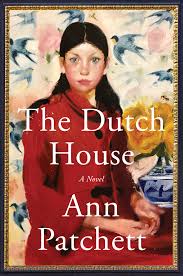Chapter 11
byChapter 11 of the narrative intricately examines the complexities of family relationships against the backdrop of Maeve’s hospitalization due to a severe infection. The chapter opens with Sandy delivering the unsettling news to the narrator about his sister’s condition, a situation Maeve had intentionally tried to keep hidden from everyone. This revelation forces the narrator into action, prompting him to immediately rush to the hospital, only to be confronted with the reality that Maeve’s situation is far more critical than he had imagined. A vivid and unsettling image of a red streak running up Maeve’s arm signals the severity of her infection, intensifying the urgency of the moment and highlighting the tension between Maeve’s autonomy and the care she so desperately needs. This serves as the emotional crux of the chapter, setting the stage for deeper explorations into the narrator’s relationships with his family, especially Maeve, and the inner conflict of personal involvement versus professional detachment.
The narrative weaves through the complexities of familial duty and personal autonomy, as the narrator grapples with Maeve’s refusal to acknowledge the seriousness of her health crisis. While he remains deeply concerned, Maeve’s independent nature and her determination to handle things on her own creates a chasm of tension. The arrival of other key figures, such as Celeste and Mr. Otterson, further complicates the emotional landscape. Celeste, who represents unresolved issues from the narrator’s personal life, brings forth the deeper emotional undercurrents that remain unresolved, while Mr. Otterson ties Maeve’s present identity to a different, more independent sphere, giving her an outlet beyond her familial connections. The differing viewpoints these characters represent force the narrator to examine the complexity of family ties and his own emotional boundaries, revealing the complexity of his relationships with each individual in the narrative. Through these relationships, the story delves into how past actions and current choices intertwine to form a tangled web of emotions that characters must navigate.
A pivotal moment in the chapter occurs when Maeve’s health scare leads her to a reunion with Fluffy, a character from their shared past. This unexpected meeting between Maeve and Fluffy acts as a catalyst for deep introspection, allowing Maeve to confront long-held emotions and memories related to her family and her place within it. The encounter illuminates Maeve’s inner world, showcasing her vulnerability, regrets, and unspoken feelings that have shaped her relationship with her family. This chapter skillfully uses this reunion to unpack the intricacies of Maeve’s emotional life, offering the reader a deeper understanding of her resilience and the emotional barriers she has built over the years. In addition to revealing more about Maeve’s character, this meeting forces the narrator to reflect on his own perceptions of his family’s past and his place within it, ultimately challenging his understanding of forgiveness and familial love.
The chapter concludes with the narrator facing the complex intersection between his medical expertise and the deeply personal family dynamics at play. His interaction with Dr. Lamb further underscores the challenge of maintaining professional detachment while being emotionally involved in the situation with Maeve. The tension between his role as a medical professional and his personal ties to Maeve becomes a key theme in this chapter, reinforcing the difficulty of navigating the boundaries between family, duty, and care. In addition to this, the chapter deftly explores themes of loss, family loyalty, and the shifting nature of relationships over time, as the narrator comes to terms with the ways in which family dynamics evolve. By exploring these themes, the chapter emphasizes the emotional challenges of reconciling past and present while fostering personal growth and healing.
Overall, Chapter 11 delves into the complexities of family dynamics, with a particular focus on the bonds of siblings, personal growth, and the struggle to balance professional and personal identities. The narrator’s journey, as well as the poignant interactions with Maeve, Celeste, and Mr. Otterson, highlights the fragility of human relationships and the emotional turbulence that can accompany the act of caregiving. By intricately examining the emotional challenges and personal histories of the characters, the chapter provides a rich, layered narrative that speaks to the universality of love, loyalty, and forgiveness. Through its vivid descriptions, emotional depth, and nuanced character development, Chapter 11 invites readers to reflect on their own family dynamics and the way unresolved emotions can shape relationships. As the narrator navigates his sister’s health crisis, the story raises essential questions about familial responsibility, healing, and the complexities of unconditional love.


